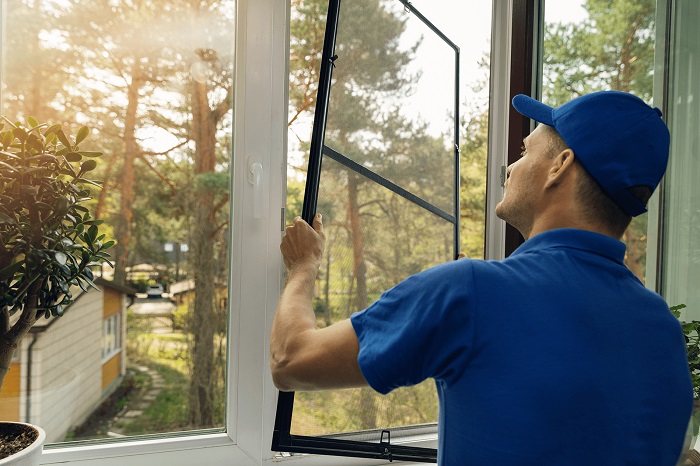Average Cost to Replace Windows in a 3-Bedroom House (2025 Guide)

If you've been thinking about replacing your windows, you're not alone. It's one of those home upgrades that people often delay until rising energy bills or a cold draft becomes too obvious to ignore. As someone who’s worked with homeowners on window replacement projects for years, I can tell youit makes a huge difference. It improves comfort, reduces energy costs, and adds real value to your home. But let's get to the real question:
How much does it cost to replace all the windows in a 3-bedroom house?
Let me break it down for you, and also help you understand what to look out for, how to plan your project, and how to make smart decisions from start to finish.
How Many Windows Are We Talking About?
Most 3-bedroom homes have somewhere between 8 and 15 windows. Of course, it varies. Some layouts are more open, some have extra windows in stairwells, hallways, or basements.
In my experience, a fairly typical setup looks like this:
2 to 3 windows in each bedroom
- A few in the living and dining areas
- One over the kitchen sink
- One in each bathroom
- Maybe one or two small ones in the basement
Some homes also have additional windows in entryways, laundry rooms, or along staircases. The architectural style of the home also plays a role. For instance, bungalows may have fewer but larger windows, while split-levels often have many smaller windows spread throughout the house.
Add a bay or picture window, and your countand costcan climb quickly.
What Drives the Cost?
Window pricing isn’t one-size-fits-all. I’ve seen jobs come in at the low end and others that triple in cost. Here’s what influences the final price:
Number of Windows
More windows means more materials, labor, and disposal. But it’s also worth noting that contractors may offer a better price per unit when you're replacing a larger number of windows at once. It’s more efficient for themand can save you some money.
Material Type
These are your common options:
- Vinyl: Affordable, durable, and easy to maintain. A great all-around choice.
- Wood: Beautiful and traditional, but pricier and requires upkeep.
- Fiberglass: Durable and energy-efficient, but costs more than vinyl.
- Aluminum: Clean look, but not great for colder climates.
Glass Type
This is where efficiency really comes in:
- Double-pane: Solid performance for most homes.
- Triple-pane: Better for extreme weather, but adds cost.
- Low-E coating: Reflects heat and improves efficiency.
- Gas-filled panes (argon/krypton): Boosts insulation between glass layers.
Size and Style
Custom sizes and styles increase cost. Bay or bow windows especially require more time and materials. Specialty windowslike those with arched tops or custom gridscan also push your costs higher.
Installation Type

There are two routes:
- Retrofit: Uses the existing frame. It’s quicker and cheaper, and works if the frame is still in good shape.
- Full-frame: Replaces everything. Costs more, but often worth it if your existing frames are worn or inefficient.
Full-frame installs usually cost about 20 to 30 percent more than retrofits, but they give you a cleaner finish and better long-term energy performance.
Labor and Location
Skilled installers may charge more, but they save you money in the long run by avoiding mistakes. Rates also vary depending on your area. If you’re in a remote location or a high-cost city, your labor fees will reflect that.
Brand and Warranty
I always advise going with a reputable brand. The windows last longer, perform better, and typically come with better warranties. A solid warranty protects you from unexpected costs down the road, especially if the glass seals fail or the frame warps.
Let’s Look at Some Realistic Scenarios
Here’s how things usually break down on my job sites:
Scenario A: Budget-Friendly
- Vinyl double-hung windows
- Retrofit installation
- $500 per window
- 12 windows total
- Estimated Cost: $6,000
Scenario B: Mid-Range Choice
- Fiberglass casement windows
- Retrofit installation
- $750 per window
- 12 windows total
- Estimated Cost: $9,000
Scenario C: Premium Upgrade
- Triple-pane casement windows
- Full-frame installation
- $1,200 per window
- 12 windows total
- Estimated Cost: $14,400
Most homeowners land somewhere in between. The key is balancing performance, aesthetics, and budget.
Retrofit vs Full-Frame: What Should You Pick?
I get this question a lot. My advice? If your frames are in good shape, retrofitting can save money and still deliver great results. But if you’ve got rotting wood, poor insulation, or outdated construction, go full-frame. It’s the better long-term investment.
Think of retrofitting as a refresh. Full-frame is a full replacement. Both have their placeit just depends on the condition of your existing windows.
Also, with full-frame installs, you get the chance to improve insulation around the frame and check for any moisture damage behind the walls. That peace of mind is often worth the extra cost.
Energy Efficiency: More Than Just a Buzzword
Energy-efficient windows make a real difference. I’ve seen families save hundreds on annual energy bills just from switching to ENERGY STAR® rated products.
Here’s what else you’ll notice:
- Fewer drafts
- More consistent indoor temps
- Less outside noise
- Higher resale value
Some homeowners are also surprised at how much more comfortable their home feelsespecially near windows that used to feel cold in winter or hot in summer. You might also notice less condensation and fewer signs of moisture build-up.
And don’t forget to check for rebates or local incentives. In many areas, there are programs that can help you recover some of your investment. Ask your installer or check government websites.
A Few Tips From Me
- Don’t chase the lowest price. The cheapest bid often cuts corners.
- Ask every question that comes to mind. A good contractor won’t mind.
- Read the warranty. Understand what’s covered and what’s not.
- Confirm cleanup and disposal are included in your quote.
- Always get everything in writing.
- Consider breaking the project into phases if your budget is tightstart with the worst windows first.
- Ask for product samples or showroom visits so you can see and touch what you’re buying.
Final Thoughts
Window replacement isn’t cheap, but it pays off. You’ll notice it in your energy bills, your comfort, and even in how your home looks from the street.
In most 3-bedroom homes, a full replacement costs somewhere between $6,000 and $15,000. Focus on quality and performance not just the bottom line. It’s an investment in your home, and in many ways, your daily comfort.
If you're thinking about starting the process, get a few quotes and talk to someone who knows the ropes. I’m always happy to walk homeowners through their options.
A proper window upgrade doesn’t just seal out the weatherit gives you peace of mind and long-term savings.











